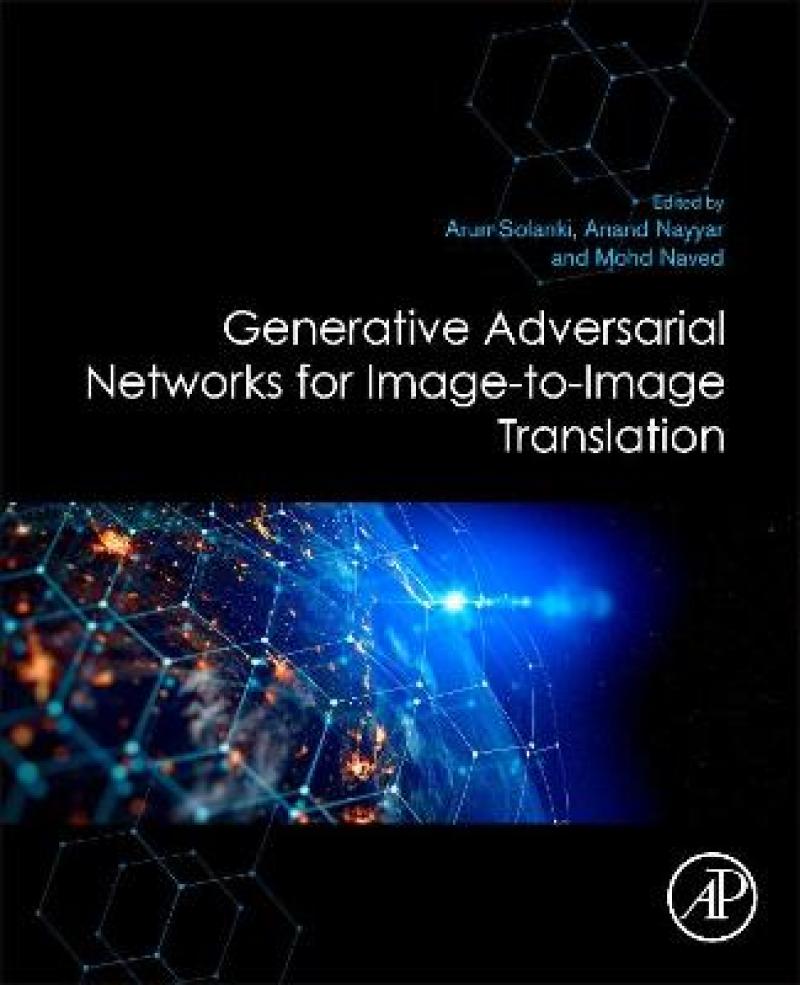Generative Adversarial Networks (GAN) have started a revolution in Deep Learning, and today GAN is one of the most researched topics in Artificial Intelligence. Generative Adversarial Networks for Image-to-Image Translation provides a comprehensive overview of the GAN (Generative Adversarial Network) concept starting from the original GAN network to various GAN-based systems such as Deep Convolutional GANs (DCGANs), Conditional GANs (cGANs), StackGAN, Wasserstein GANs (WGAN), cyclical GANs, and many more. The book also provides readers with detailed real-world applications and common projects built using the GAN system with respective Python code. A typical GAN system consists of two neural networks, i.e., generator and discriminator. Both of these networks contest with each other, similar to game theory. The generator is responsible for generating quality images that should resemble ground truth, and the discriminator is accountable for identifying whether the generated image is a real image or a fake image generated by the generator. Being one of the unsupervised learning-based architectures, GAN is a preferred method in cases where labeled data is not available. GAN can generate high-quality images, images of human faces developed from several sketches, convert images from one domain to another, enhance images, combine an image with the style of another image, change the appearance of a human face image to show the effects in the progression of aging, generate images from text, and many more applications. GAN is helpful in generating output very close to the output generated by humans in a fraction of second, and it can efficiently produce high-quality music, speech, and images.
Les mer
1. Super-Resolution based GAN for Image Processing: Recent Advances and Future Trends
2. GAN models in Natural Language Processing and Image Translation
3. Generative Adversarial Networks and their variants
4. Comparative Analysis of Filtering Methods in Fuzzy C-Mean Environment for DICOM Image Segmentation
5. A Review on the Techniques for Generation of Images using GAN
6. A Review of Techniques to Detect the GAN Generated Fake Images
7. Synthesis of Respiratory Signals using Conditional Generative Adversarial Networks from Scalogram Representation
8. Visual Similarity-Based Fashion Recommendation System
9. Deep learning based vegetation index estimation
10. Image Generation using Generative Adversarial Networks
11. Generative Adversarial Networks for Histopathology Staining
12. ANALYSIS OF FALSE DATA DETECTION RATE IN GENERATIVE ADVERSARIAL NETWORKS USING RECURRENT NEURAL NETWORK
13. WGGAN: A Wavelet-Guided Generative Adversarial Network for Thermal Image Translation
14. GENERATIVE ADVERSARIAL NETWORK FOR VIDEO ANALYTICS
15. Multimodal reconstruction of retinal images over unpaired datasets using cyclical generative adversarial networks
16. Generative Adversarial Network for Video Anomaly Detection
Les mer
Examines the concepts and technical methods of data deduplication for a wide variety of applications
Introduces the concept of Generative Adversarial Networks (GAN), including the basics of Generative Modelling, Deep Learning, Autoencoders, and advanced topics in GAN
Demonstrates GANs for a wide variety of applications, including image generation, Big Data and data analytics, cloud computing, digital transformation, E-Commerce, and Artistic Neural Networks
Includes a wide variety of biomedical and scientific applications, including unsupervised learning, natural language processing, pattern recognition, image and video processing, and disease diagnosis
Provides a robust set of methods that will help readers to appropriately and judiciously use the suitable GANs for their applications
Les mer
Produktdetaljer
ISBN
9780128235195
Publisert
2021-06-23
Utgiver
Elsevier Science Publishing Co Inc; Academic Press Inc
Vekt
450 gr
Høyde
235 mm
Bredde
191 mm
Aldersnivå
P, 06
Språk
Product language
Engelsk
Format
Product format
Heftet
Antall sider
444

